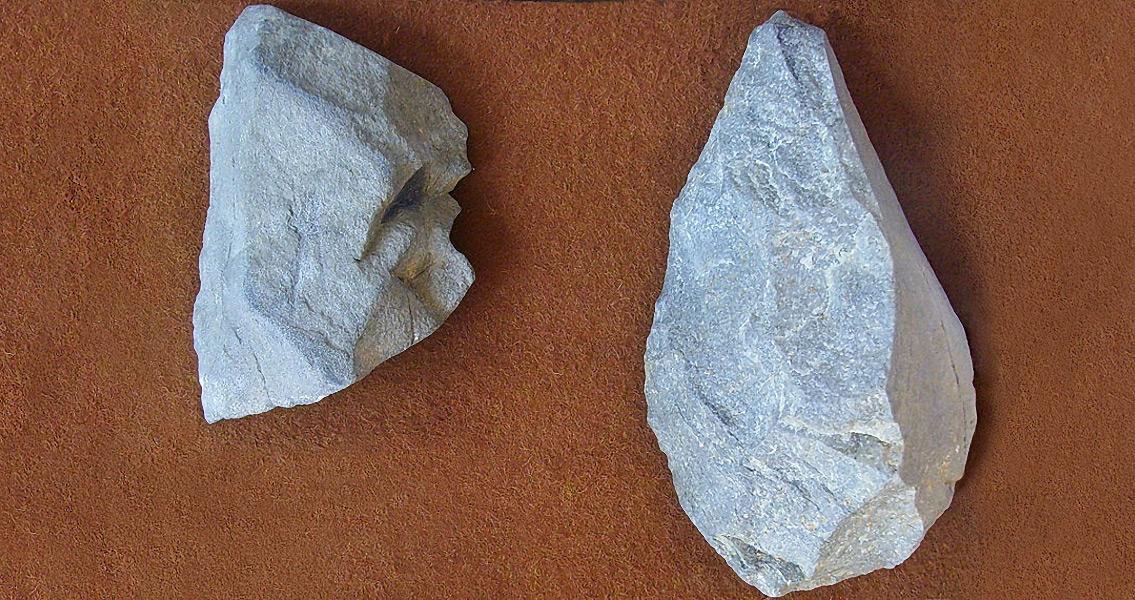<![CDATA[There have been a few studies released recently that suggest our Paleolithic ancestors were not as primitive as previously believed. The latest one, “Cognitive Demands of Lower Paleolithic Toolmaking”, claims that the skills required to make a Paleolithic hand axe involved more than good hand-eye coordination, physical strength and a vague idea about the purpose of the tool. On the contrary, constructing a hand axe required an ability for strategic thinking that scientists refer to as high-level cognitive processes. The study, led by experimental archaeologist Dietrich Stout from Emory University, aimed to establish what areas of the brain were used in knapping an Acheulean hand axe. The Acheulean industry, as it is called, is believed to have been the first standardised “procedure” for making stone tools. It takes its name from Saint-Acheul, in France, one of the archaeological sites where such tools, dating back to 500,000 years ago, were first discovered. A defining characteristic of Acheulean tools is that they are not simply flakes hacked off from a piece of rock with another stone. They are sophisticated items, shaped using animal antlers or bones to achieve a symmetrical look, and sharpened so they could be used to more effectively kill and dismember the animals that those early people hunted. The research team hypothesised that the manipulation of stones to turn them into axes required high cognitive control, a function of the pre-frontal cortex, that is, the front most part of the brain. The development of such control, which includes the ability to forecast the outcome of a certain action, has played a major part in human evolution, and has gone hand in hand with the development of technology. The scientists enlisted the help of six subjects who underwent training in Stone Age toolmaking. Their relevant skills were tested both before the experiment started and after it ended, 18 months later. At the start, halfway through, and at the end of the experiment, the participants were examined with functional magnetic resonance imaging and diffusion tensor imaging to see which parts of their brains were most active when it came to learning how to make stone tools. The imaging examinations were carried out while the participants watched training videos and answered two questions. The videos featured a rotating stone core (the rocks from which the future tools were knapped) with a red dot placed on the spot where the toolmaker would strike, and a white area marking the resulting flake. The two questions asked participants whether the location marked with the red dot would indeed result in the flake marked in white, and whether the red dot marked the correct spot to strike the core in order to get the desired flake. Answering these questions engaged different areas of the brain. While answering the first one engaged posterior areas, which control our reflexive, motor-control skills; the ability to drive or ride a bicycle, for example. Projecting whether an action (hitting the core at this exact spot) would indeed lead to a pre-planned result (a specifically shaped flake) required strategic thinking, the domain of the pre-frontal cortex. The imaging examination supported the researchers' hypothesis: the pre-frontal cortex did play a central part in stone toolmaking. The subjects that gave more accurate answers to the questions turned out to be better with the actual toolmaking. What’s more, however, it seemed that the modern participants in the experiment were as a whole much worse at making stone tools than our ancestors from half a million years ago, possibly because of differences in physical strength and accuracy. The results support the findings of an earlier study that suggested developing the skills necessary for making stone tools led to improved connections within the brain, between the parietal and frontal lobes, which in turn led to better performance with toolmaking. The short conclusion would be that making stone tools, and making them well, played an important part in the evolution of the human brain, in further evidence that evolution and technological advancements are inseparable and mutually dependent. Image courtesy of Wikimedia Commons user: Gerbil ]]>
Stone Age Toolmaking Not As Simple As Believed
